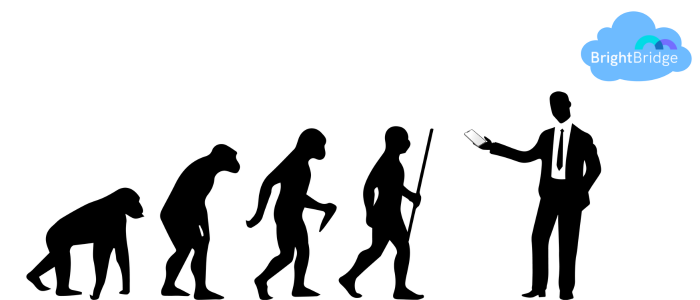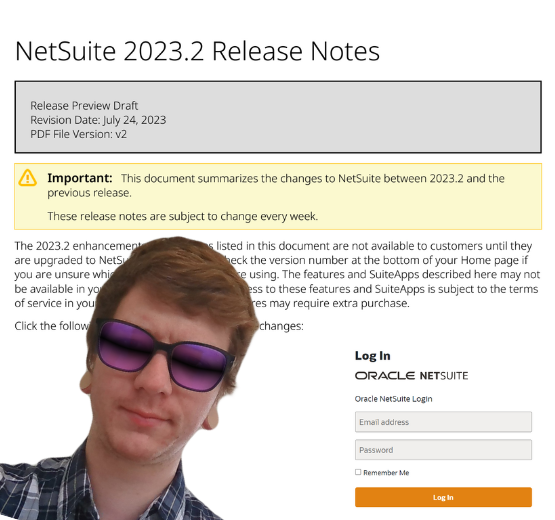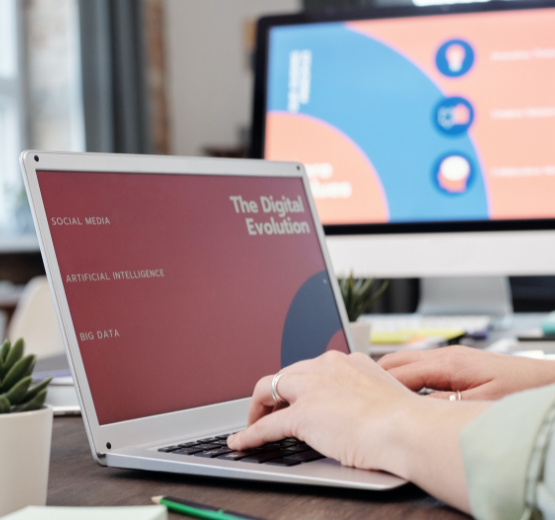“We went through a digital transformation programme – now what?”
Sound familiar?
Digital transformation is a buzzword we all know and love, and adoption of digital technology has been an important focus for businesses for some years now.
While many organisations were looking at ways to work smarter, not harder with tech even before the pandemic, Covid-19 was the primary driver for companies to digitally transform in all sorts of ways; whether they were ready for it or not! In fact, McKinsey research discovered that the adoption of digital technologies was accelerated by several years, potentially changing business for “the long haul”.
Yet tech doesn’t stand still – new advancements are being made all the time to make everyone’s lives easier – and neither do businesses. So, what does this mean for those who have already spent time, money, and energy on digital transformation projects? We think the era of digital evolution and optimisation has begun.

Now, instead of focusing on one-off ‘digital transformation’ projects, companies should now consider ongoing optimisation as their goal: gradually and continually evolving and maturing the tech they use in line with innovations and a strategic vision.
We’ve identified nine common positions that companies are now in – where they have undergone digital transformation with business software – and explore how they can digitally evolve with an integrated Enterprise Resource Planning (ERP) solution tech stack that’s fit for now and many years to come.
1. Outgrowing entry level solutions
2. Using on-premise software
3. Using numerous unconnected systems
4. IT training is unmanageable
5. Data and reporting challenges
6. Post-pandemic review
7. Using out of development software
8. Wanting to use automation and AI
9.Getting increased ROI from an ERP like NetSuite
1.
You’re using a modern solution – but you’ve outgrown its entry level capabilities

The majority of organisations have seen the benefit in digitising business-critical processes such as accounting and have adopted entry level household name solutions like Quickbooks or Xero. Those whose sales processes orbited around a central sales lead spreadsheet may have moved over to well-known CRMs like HubSpot or Salesforce.
There is nothing wrong with any of these solutions and many of them come highly rated. However, when you compare platforms like these to a fully customisable ERP platform like NetSuite, the ERP will generally win, hands down.
The biggest benefit of moving to an ERP is that you can manage your whole business through a single pane of glass – accounts, CRM, stock control, warehousing, purchasing, point of sale, analytics, the lot. With everything managed through a single platform where all of the business functions seamlessly talk to each other, not only do firms benefit from a truthful picture, but many more processes can be automated.
Because any ERP’s functionality has to flex around different businesses in order to maximise their audience, this arguably means that ERPs have to be more flexible than individual accounting or warehousing tools which have a blinkered, laser focus on that particular function.
2. You’re using enterprise-grade software – but it’s on premise only

Given that many organisations will have already undergone some kind of digital transformation, it’s likely that some will have made the leap from entry level platforms to something a little more enterprise level. That’s great! However, not all enterprise software is made alike.
As we recently explored in our NetSuite comparison series, some big names in enterprise accounting and ERP software still require that their so called cloud software be installed on premise – on a company’s networked server – in order for the company to use it. Sage X3, which we compared with NetSuite, is just one example of this. Though this is functional for many businesses, it isn’t really conducive to hybrid or remote working.
In order for your team to use on-premise software tools like these, they either have to use an on-site networked PC, or securely dial in to your premises’ network in order to use the software remotely. The latter comes with its own problems – chiefly a) setting up systems to let users dial in securely and b) training those remote workers how to connect to and use it properly. This all adds time costs and roadblocks to using the software that you really don’t need.
And what’s more, some of these on-premise tools state they are “cloud-ready” but in reality, they just let you install the same on-premise software on a cloud server instead. The practicalities and security concerns of using it remotely are still left down to you.
Updating locally housed software is also a challenge – the provider can’t push out blanket updates to servers that aren’t under their direct control, so different users will naturally end up using different versions over time. Not great for interoperability, security, or training.
Full cloud services like NetSuite are much better in terms of remote connectivity – they are all up on the cloud, ready to be accessed through any device with an internet connection and a web browser. And because the provider has direct control over the core, central software, they can roll out updates when they are ready, so everyone’s on the same, up to date system, benefiting from the same security, functionality, and user interfaces.
3. You’re juggling siloed systems to get the outputs you need

Let’s say all of your enterprise software is great – but you use a separate CRM tool, warehouse operations aren’t 100% integrated and reports are often manually generated. That’s fine but it’s not a slick way to operate in 2023. For example, you might have to export certain accounting data and certain CRM data and manually slice and dice that data in a spreadsheet to get the information you need to make certain business decisions.
Not only can this be a time-consuming, manual process, but it also adds a point of potential failure where errors can creep in and create more work for you and your teams.
As mentioned above, one of the major benefits of using ERP software is to consolidate all of your business processes. Because you are handling global accounts, orders, communications, analytics, stock, projects, and more through a single dashboard, you are better equipped to get a true picture of your whole business without having to manually paper over the cracks in your knowledge!
4. Your IT training and onboarding is becoming increasingly complex

IT training and staff onboarding can grow increasingly intractable, especially when different systems handle markedly similar functions, and over time workers naturally create their own processes to get the job done. When all of your business-critical processes are consolidated into a single ERP system, it’s much easier to help people become familiar with it. But even then, we’ve seen fantastic NetSuite set-ups that aren’t being utilised correctly because training processes aren’t hitting the mark.
We see this as being a crucial part of the ongoing optimisation process – a review to explore whether the system is being used in line to the design intent (and to its full potential) can reveal training gaps, which can then be properly managed.
5. You just can’t put your hands on the right data, in the right format, at the right time

This issue can also be caused by juggling too many software systems and data storage locations. When you have to go frantically hunting around in different systems for the information you need, that isn’t particularly conducive to timely, calmly thought-out business decisions.
ERP systems like NetSuite help you manage and effectively consolidate all core areas of your business, as well as housing all of the data that those functions create – serving as a complete “data warehouse” for your whole organisation. And what’s more, with its in-built data analytics functionality, you can present that data and create reports totally within the platform.
We recently sat down with our Integration Consultant, Nic, for a chat about his role and career, so if the democratisation of data is one of your goals, click here to watch his vlog.
6. You rushed to digitise due to Covid-19 and your systems are far from perfect

It’s a predicament that a lot of businesses found themselves in on that fateful day in March 2020 when the first Covid-19 lockdown was announced: “how do we continue what we’re doing in the office, but from home?”
In order to stay afloat and keep their staff safe, a lot of organisations had to make rushed IT decisions. Three years have now passed, and with the benefit of hindsight, it’s likely that some cracks in those snap decisions are beginning to show. Hastily chosen software or quickly developed processes may have resulted in team members creating their own patch-up processes that complicate their work and maybe even introduce shadow IT into your infrastructure.
We certainly don’t judge any business who had to suddenly flex with the onset of the pandemic, but we understand that now is an opportune time for many to id=”end_of_dev”think about evolving their technology solutions for a best fit instead of a quick fix.
7. You’re using software that is soon to be “end of life” or out of development

As with all things, software comes and goes – particularly on-premise systems. Even mainstays like Sage Line 500, Microsoft AX and SAP Business ByDesign come to their “end of life” (EOL) over time, for myriad different reasons. In most cases that software will still function after its use-by date, but it won’t be centrally updated after that time. Those who continue to use it will risk security threats, outdated legislative compliance, waning compatibility with newer technologies and will miss out on state-of-the-art functionality such as those with AI-driven features.
But if you are using an ERP, accounting, or CRM platform that is reaching retirement, don’t panic – evolve. This is an opportunity to look to the future and harness digital evolution by migrating to an ERP platform that will let you run your entire business seamlessly.
8. You’re not making the most of automation and AI

Just how much time is your team using up doing manual, time consuming tasks? We’ve all butted up against annoying jobs that could have easily been resolved by a simple “if this, then that” command here or a spot of auto-filled data there. Not only do these tedious tasks wither job satisfaction, but they also increase the chance of errors and decrease the return on investment you are getting from your team members.
However, NetSuite allows users to define and automate business processes using an adaptable, drag-and-drop workflow editor that can simplify and combine as many processes as you like.
And you can’t really move online nowadays without seeing something or other about AI. Far from putting us all out of a job (at least for the time being) AI-enabled features are extremely useful when used appropriately. NetSuite has been integrating AI-powered technology into the platform since 2018, and now uses AI and machine learning to help better understand trends from data; to automate routine tasks; and to suggest meaningful upsells and cross sells to clients.
All in all, this serves to increase the return on investment from staff and create a better customer experience – what’s not to like?
9. You’re using a cloud ERP like NetSuite – but you’re not using all the tools available

Even those already using a fully consolidated, cloud-based ERP will still benefit from a digital evolution strategy, incorporating system and use reviews. The feature sets of tools like Oracle NetSuite and Microsoft Dynamics are so massively wide-reaching that it’s easy to overlook some of their more niche functions without an expert team like BrightBridge in your corner.
As ERP experts, it’s something we see a lot. Companies invest in a digital transformation project that leaves them with a well-implemented, top of the range ERP that works a treat for many of their business functions. However, often there are “nice-to-haves” that didn’t make the cut due to time or budget constraints within the initial implementation project. Sometimes the business develops along a slightly different path than anticipated after the ERP was implemented. Or maybe the company simply hasn’t had time to review if it’s delivering the desired ROI.
Other users may not be using new features and updated functionality (that come twice a year with NetSuite) to their fullest; some may not be using bespoke customisations that would streamline their operations; and some may not be making the most of SuiteApps to maximise their ERP investment.
Wherever you are in your digital evolution journey, the team at BrightBridge would love to hear from you. Whether you are just starting to consider an ERP-powered future or you already use an ERP and need an MOT to review and plan optimisations to your NetSuite solution, we’re here to help. Request a call back from one of our experts today!
Keep reading

What is a NetSuite implementation partner? How do you choose one?

Technology fit for total customer service in 2024

Retail and wholesale distribution: how to improve supply chains

Ditching Sage 1000: what you need to know from businesses that have done it

6 ways AI-ready Microsoft Dynamics 365 helps chartered associations serve members

6 retail and wholesale distribution challenges and how NetSuite solves them

The most exciting features in Microsoft Dynamics 365 2023 Release Wave 2

How to manage a new NetSuite Release: one expert's update process

What’s in NetSuite Release 2023.2?

